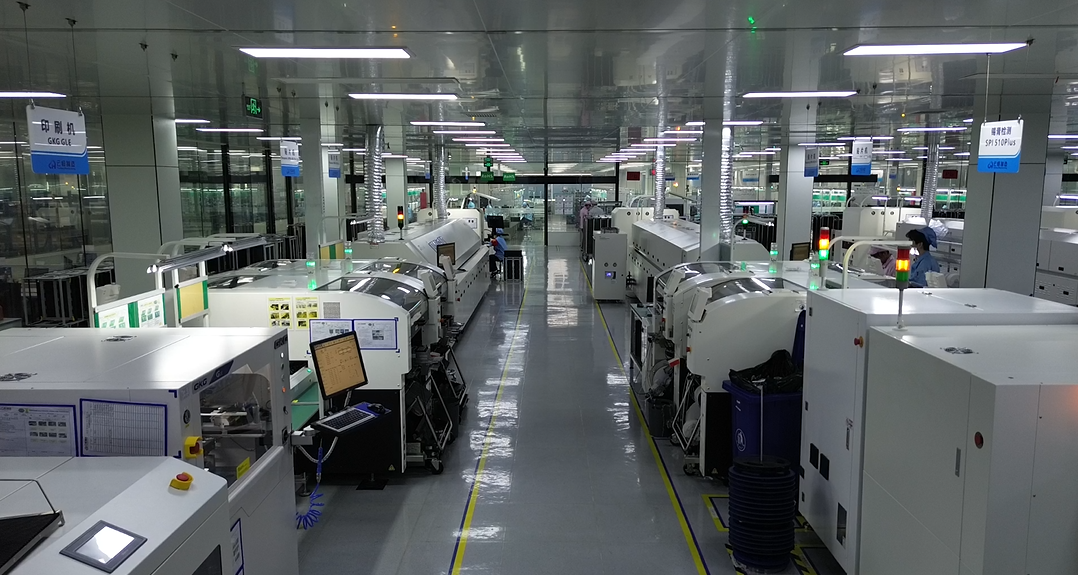技术文章:麦克风的分类和性能参数

<p style="font-size: 18px; line-height: 40px; text-align: left; margin-bottom: 30px;"><strong style="color: blue;">2. 麦克风简介</strong></p> <p style="font-size: 18px; line-height: 40px; text-align: left; margin-bottom: 30px;">麦克风是将声音转换为电信号的设备,广泛应用于电话、语音识别、音乐录制等场合,麦克风可以将声音的变化通过特定的机制转换为电压或者电流的变化,再交给电路系统进行处理,由此可见,麦克风和扬声器执行的是相反的过程。</p> <p style="font-size: 18px; line-height: 40px; text-align: left; margin-bottom: 30px;">根据不同的声电转换机制,麦克风分为不同的类型,包括动态麦克风、电容式麦克风和压电式麦克风等,由于输出信号比较微弱,一般麦克风都会配合前置放大器(Preamplifier)一起使用,再与后端电路连接。</p> <p style="font-size: 18px; line-height: 40px; text-align: left; margin-bottom: 30px;"><strong style="color: blue;">3. 麦克风分类</strong></p> <p style="font-size: 18px; line-height: 40px; text-align: left; margin-bottom: 30px;">根据声电转换方式的不同,麦克风大致分为以下 7 类:</p> <p style="font-size: 18px; line-height: 40px; text-align: left; margin-bottom: 30px;">(1)动态麦克风 Dynamic Microphone</p> <div style="text-align: left; margin-bottom: 10px;"><img src="https://p3-sign.toutiaoimg.com/tos-cn-i-axegupay5k/9d7de5c00d404bdc945e04c1015e2f6a~tplv-tt-origin-web:gif.jpeg?_iz=58558&from=article.pc_detail&lk3s=953192f4&x-expires=1744800898&x-signature=LCfZ5FH94iVyF5tvI0A2IPxZUMI%3D" style="width: 100%; margin-bottom: 20px;"></div> <p style="font-size: 18px; line-height: 40px; text-align: left; margin-bottom: 30px;">原理:声音扰动圆锥体在磁场中运动,通过电磁感应在线圈上产生电压的变化;</p> <p style="font-size: 18px; line-height: 40px; text-align: left; margin-bottom: 30px;">优点:简单紧固、易于小型化、不需额外供电、不易过载(失真);</p> <p style="font-size: 18px; line-height: 40px; text-align: left; margin-bottom: 30px;">缺点:灵敏度不如驻极体麦克风、频响和瞬态响应不够好、多数不可以调整方向性;</p> <p style="font-size: 18px; line-height: 40px; text-align: left; margin-bottom: 30px;">(2)带状麦克风 Ribbon Microphone</p> <div style="text-align: left; margin-bottom: 10px;"><img src="data:image/gif;base64,R0lGODlhAQABAIAAAAAAAP///yH5BAEAAAAALAAAAAABAAEAAAIBRAA7" style="width: 100%; margin-bottom: 20px;"></div> <p style="font-size: 18px; line-height: 40px; text-align: left; margin-bottom: 30px;">原理:声音扰动磁场中金属带,通过电磁感应在金属带两端产生电压变化;</p> <p style="font-size: 18px; line-height: 40px; text-align: left; margin-bottom: 30px;">优点:音质效果好、双向响应效果好、瞬态响应好;</p> <p style="font-size: 18px; line-height: 40px; text-align: left; margin-bottom: 30px;">缺点:脆弱易损、输出灵敏度小、高声压易造成损坏;</p> <p style="font-size: 18px; line-height: 40px; text-align: left; margin-bottom: 30px;">(3)电容式麦克风 Condenser Microphone</p> <div style="text-align: left; margin-bottom: 10px;"><img src="data:image/gif;base64,R0lGODlhAQABAIAAAAAAAP///yH5BAEAAAAALAAAAAABAAEAAAIBRAA7" style="width: 100%; margin-bottom: 20px;"></div> <p style="font-size: 18px; line-height: 40px; text-align: left; margin-bottom: 30px;">原理:声音扰动改变金属膜板与背板的距离,引起膜板和背板间电容 C 的变化,电容器上存储的电荷 Q 也会随着变化,进而在电阻 R 上产生电压的变化,由此完成声音信号到电信号的转换;</p> <p style="font-size: 18px; line-height: 40px; text-align: left; margin-bottom: 30px;">优点:灵敏度高、频响特性好、瞬态响应特性好;</p> <p style="font-size: 18px; line-height: 40px; text-align: left; margin-bottom: 30px;">缺点:脆弱、需要外部供电、对湿度敏感、内部可能过载(失真);</p> <p style="font-size: 18px; line-height: 40px; text-align: left; margin-bottom: 30px;">(4)驻极体麦克风 Electret Condenser Microphone</p> <div style="text-align: left; margin-bottom: 10px;"><img src="data:image/gif;base64,R0lGODlhAQABAIAAAAAAAP///yH5BAEAAAAALAAAAAABAAEAAAIBRAA7" style="width: 100%; margin-bottom: 20px;"></div> <p style="font-size: 18px; line-height: 40px; text-align: left; margin-bottom: 30px;">原理:驻极体麦克风原理类似电容式麦克风,声音影响金属隔膜与背板距离,电容器上的电荷变化在电阻上产生电压的变化,由此完成声音信号到电信号的转换,ECM 的金属隔膜是永久性的含电荷材料,因此在使用中不必需要额外的偏置电源,但 ECM 的频率响应特性不如电容式麦克风;</p> <p style="font-size: 18px; line-height: 40px; text-align: left; margin-bottom: 30px;">驻极体麦克风因其低成本小型化的特点,在手持设备中得到广泛应用,内部集成 FET 前置放大器的驻极体麦克风可以提供很高的性能,下图为电容式麦克风(a)和驻极体麦克风(b)的电路的对比示意图,其中虚线框内代表麦克风本体部分。</p> <div style="text-align: left; margin-bottom: 10px;"><img src="data:image/gif;base64,R0lGODlhAQABAIAAAAAAAP///yH5BAEAAAAALAAAAAABAAEAAAIBRAA7" style="width: 100%; margin-bottom: 20px;"></div> <p style="font-size: 18px; line-height: 40px; text-align: left; margin-bottom
